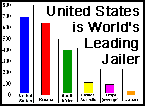
|
Food Pathogens: What Are They?
by Ironz
by ekahn.com
A food pathogen is a microscopic organism which reproduces in your food and can cause illness when consumed. The very food you eat in your everyday life. As scary as this seems, its not all that bad. After all, we've been consuming pathogen filled foods our whole lives. The human species as a whole has always been consuming these same foods for thousands of years.
Have you ever wondered what causes you to get a stomach aches, cramps, fevers, and nausea? It's not always your coughing friends. It's not always from your children who interact with hundreds of other children at school. These illnesses are cause by something you are much more familiar with. Food.
Vibrio cholerae is a pathogen found in shell fish and poor water sanitation. It takes anywhere from six hours to five days to take effect. Over one million cases and ten thousand deaths were reported between 1991 and 1995. The symptoms include abdominal cramps, diarrhea, vomiting, fever, chills, malaise, nausea, headache, prostration, and swollen lymph nodes.
Yersinia enterocolitica is found in meat, fish, raw milk, soil, and water. Effects for this pathogen to take place happen within twenty-four to forty-eight hours. Although not fatal, there are about seventeen thousand cases reported annually. Symptoms for the yersinia enterocolitica are abdominal cramps, diarrhea, vomiting, fever, chills, malaise, nausea, headache, prostration, and swollen nymph nodes.
Streptococcus pyogenes is usually misidentified as the flu. It takes anywhere from one day to three days to feel the effects of this pathogen after consumption of milk, ice cream, eggs, cheese, potato salad, and lobster. Symptoms are sore throat, fever, nausea, vomiting, rhinorrhea, and rash.
Clostridium perfringens are associated with meat, meat products, poultry, soils, and sewage. It takes from eight to twenty-two hours to feel the side effects of abdominal cramps, diarrhea, and gas. About ten thousand cases are reported each year, with no fatalities.
Listeria monocytogenes can take almost three weeks for you to feel the symptoms of fever, chills, malaise, prostration, joint ache, and swollen lymph nodes. The associated foods include raw milk, meat, fish, poultry, cheese, soil, and water. About twenty thousand cases are reported each year.
Shigella is found in milk, dairy products, poultry, raw vegetables, and salads (tuna, chicken, potato, and macaroni). It takes anywhere from twelve to fifty hours to feel the effects. Over three hundred thousand incidents have been reported annually. Symptoms are abdominal cramps, diarrhea, vomiting, fever, chills, malaise, nausea, headache, prostration, and swollen lymph nodes.
Staphylococcus aureus takes effect the most rapidly, within an hour. Symptoms include nausea, vomiting, retching, diarrhea, prostration, and abdominal pain. It is found in milk, dairy products, water, meats, cream pies, and salads (tuna, chicken, potato, and macaroni). The amount of incidents reported annually each year is hard to determine because this pathogen is usually misdiagnosed as the flu.
Salmonella takes effect in six to fourty-eight hours. It is found in meats, poultry, eggs, milk, and dairy products. Two to four million cases are reported annually. Symptoms are abdominal cramps, diarrhea, vomiting, fever, chills, malaise, nausea, headache, prostration, and swollen nymph nodes.
Escherichia coli O5157:H7 takes effect in six to forty-eight hours from consumption of undercooked or raw meat, alfalfa sprouts, poultry, unpasteurized fruit juices, and lettuce. There are about seventy-three thousand cases and sixty-one deaths annually. Symptoms are abdominal cramps, diarrhea, vomiting, fever, chills, malaise, nausea, headache, prostration, and swollen nymph nodes.
With so many food pathogens out there, it is nearly impossible to stay safe. The more deadly ones are easily avoided and most common in third world countries. The symptoms of some of the pathogens are often confused with the flu, and are not treated properly. With so many different options available, it is just easier to blame it on the flu. There is no beneficial solution to avoiding food pathogens. Tighten your belts, and keep eating.
|

|

